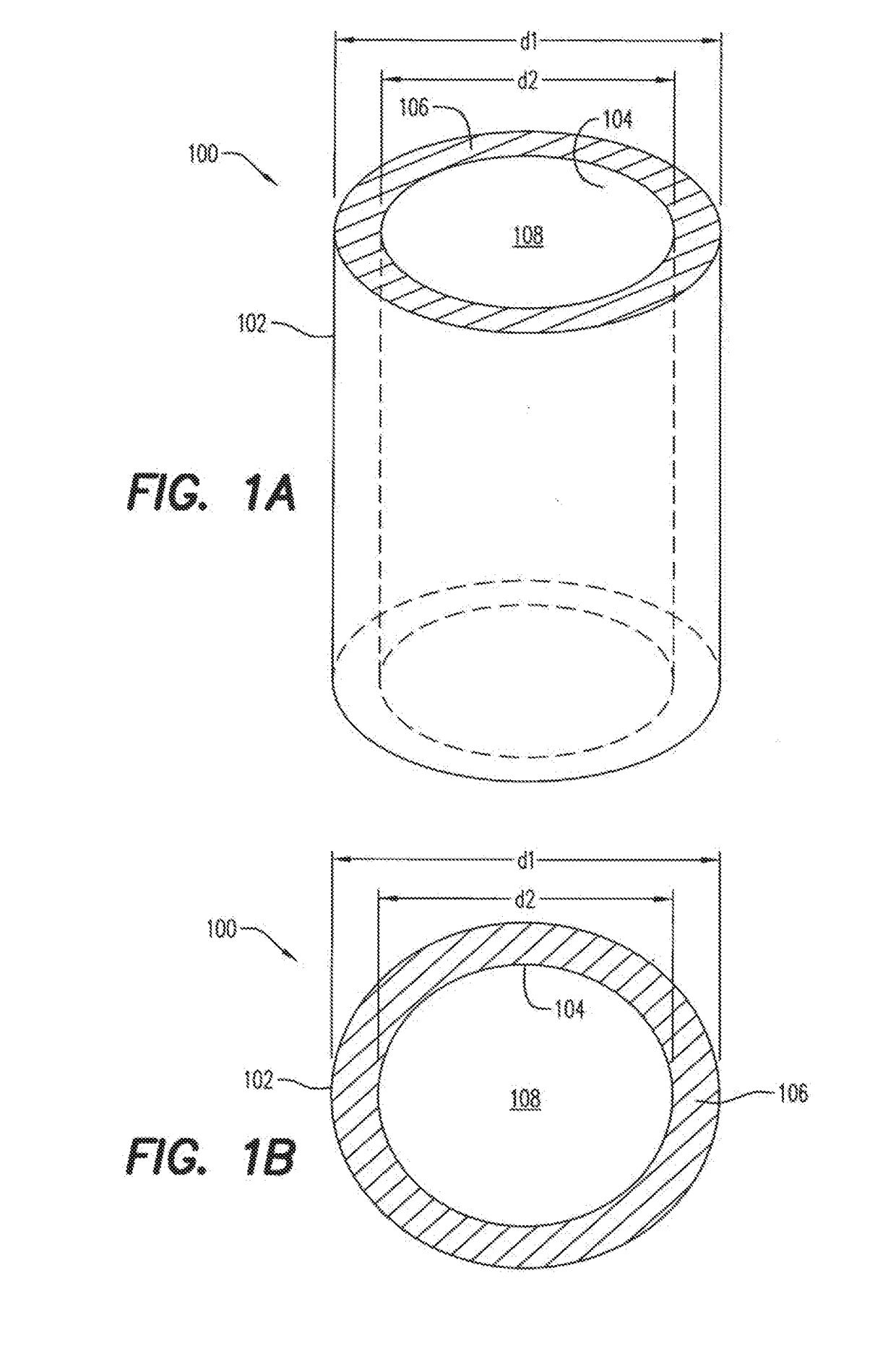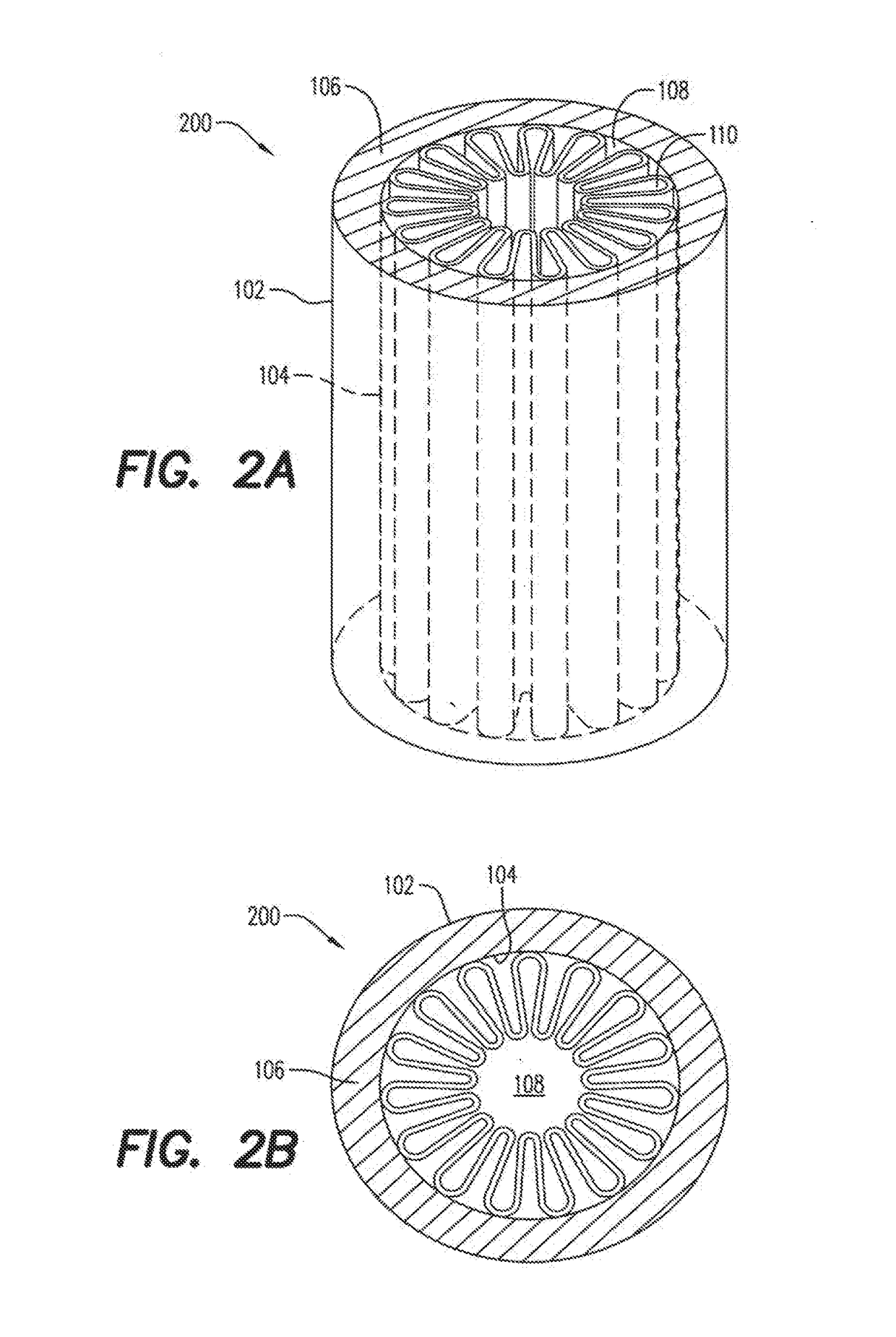Fluid purification media and systems and methods of using same
- Summary
- Abstract
- Description
- Claims
- Application Information
AI Technical Summary
Benefits of technology
Problems solved by technology
Method used
Image
Examples
experiment 1
[0125]A pleated Ahlstrom Disruptor fabric having 37 pleats each having a 0.25 inch length was rolled into a cylinder having a 4.5 inch diameter and a 10 inch length was introduced into a radial flow housing. The system was subjected to challenge water according to NSF testing protocol 53 for live cyst with AC dust. At a flow rate of 5 GPM, the following results were obtained:
25% cycle-99.999% reduction
50% cycle-98% reduction
75% cycle-91% reduction
experiment 2
[0126]The same pleated filter as described in Experiment 1 was inserted into the center of an annular rigid porous polymeric purification block having a thickness of 17 mm and made from high porosity, high molecular weight HDPE. The resulting assembly was inserted into a radial flow housing and subjected to the same NSF testing protocol. At a flow rate of 5 GPM the following results were obtained:
25% cycle-99.999% reduction
50% cycle-99.999% reduction
75% cycle-99.999% reduction
experiment 3
[0127]The same pleated filter as described above but having 17 pleats each having a length of 12 mm was formed into a cylinder having a diameter of 1.5 inch and a length of 20 inches and introduced into a radial flow housing. The assembly was subjected to the same NSF testing protocol. At a flow rate of 2 GPM the following results were obtained:
25% cycle-99% reduction
50% cycle-97% reduction
75% cycle-86% reduction
PUM
| Property | Measurement | Unit |
|---|---|---|
| Fraction | aaaaa | aaaaa |
| Porosity | aaaaa | aaaaa |
| Porosity | aaaaa | aaaaa |
Abstract
Description
Claims
Application Information
 Login to View More
Login to View More - R&D
- Intellectual Property
- Life Sciences
- Materials
- Tech Scout
- Unparalleled Data Quality
- Higher Quality Content
- 60% Fewer Hallucinations
Browse by: Latest US Patents, China's latest patents, Technical Efficacy Thesaurus, Application Domain, Technology Topic, Popular Technical Reports.
© 2025 PatSnap. All rights reserved.Legal|Privacy policy|Modern Slavery Act Transparency Statement|Sitemap|About US| Contact US: help@patsnap.com



